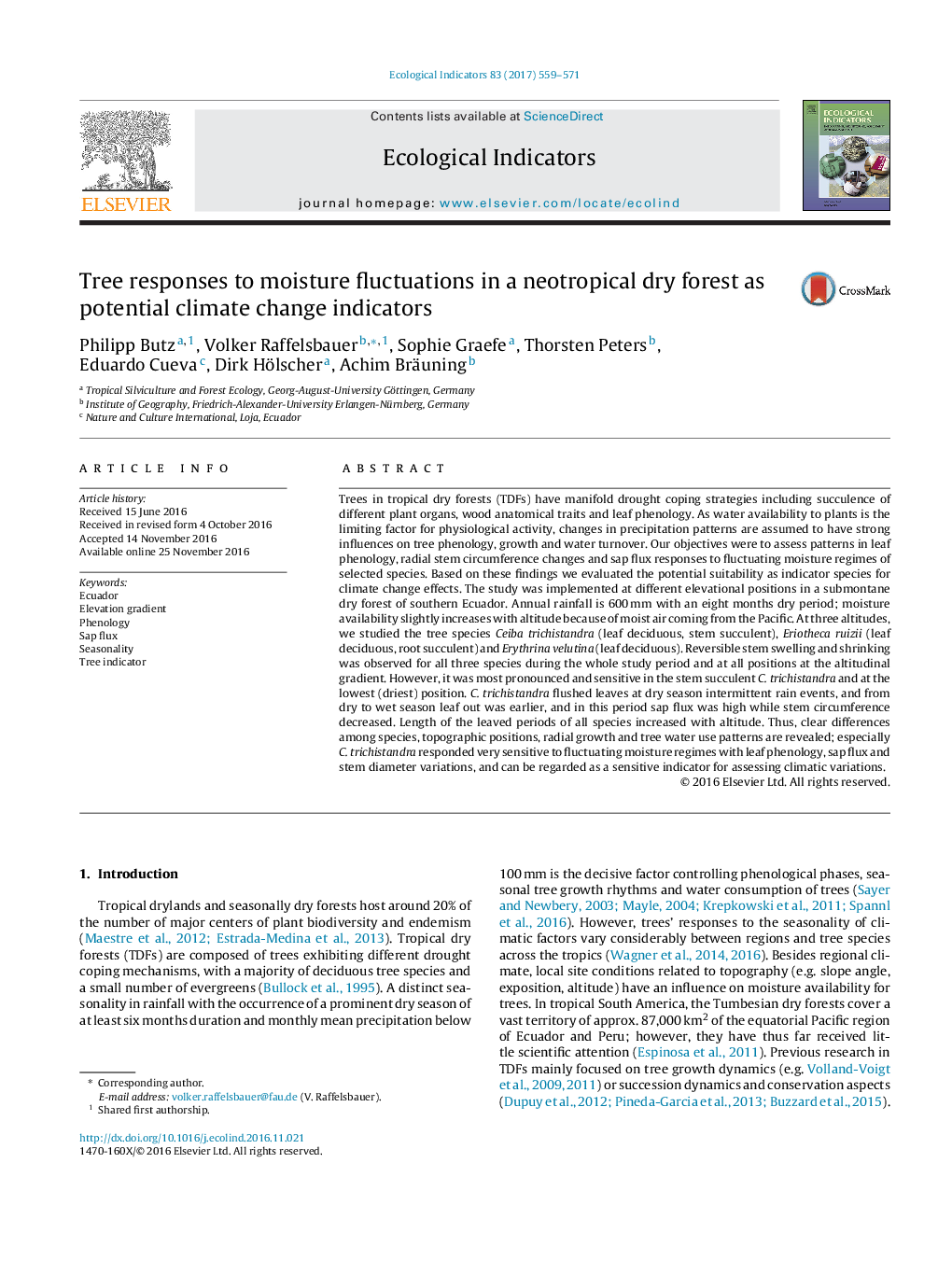| کد مقاله | کد نشریه | سال انتشار | مقاله انگلیسی | نسخه تمام متن |
|---|---|---|---|---|
| 5741471 | 1617119 | 2017 | 13 صفحه PDF | دانلود رایگان |
Trees in tropical dry forests (TDFs) have manifold drought coping strategies including succulence of different plant organs, wood anatomical traits and leaf phenology. As water availability to plants is the limiting factor for physiological activity, changes in precipitation patterns are assumed to have strong influences on tree phenology, growth and water turnover. Our objectives were to assess patterns in leaf phenology, radial stem circumference changes and sap flux responses to fluctuating moisture regimes of selected species. Based on these findings we evaluated the potential suitability as indicator species for climate change effects. The study was implemented at different elevational positions in a submontane dry forest of southern Ecuador. Annual rainfall is 600Â mm with an eight months dry period; moisture availability slightly increases with altitude because of moist air coming from the Pacific. At three altitudes, we studied the tree species Ceiba trichistandra (leaf deciduous, stem succulent), Eriotheca ruizii (leaf deciduous, root succulent) and Erythrina velutina (leaf deciduous). Reversible stem swelling and shrinking was observed for all three species during the whole study period and at all positions at the altitudinal gradient. However, it was most pronounced and sensitive in the stem succulent C. trichistandra and at the lowest (driest) position. C. trichistandra flushed leaves at dry season intermittent rain events, and from dry to wet season leaf out was earlier, and in this period sap flux was high while stem circumference decreased. Length of the leaved periods of all species increased with altitude. Thus, clear differences among species, topographic positions, radial growth and tree water use patterns are revealed; especially C. trichistandra responded very sensitive to fluctuating moisture regimes with leaf phenology, sap flux and stem diameter variations, and can be regarded as a sensitive indicator for assessing climatic variations.
Journal: Ecological Indicators - Volume 83, December 2017, Pages 559-571
